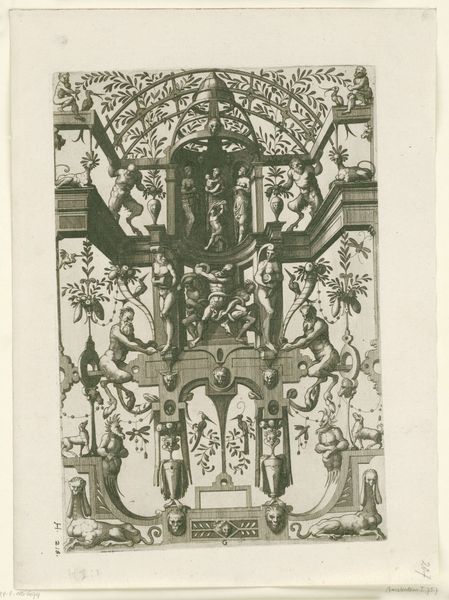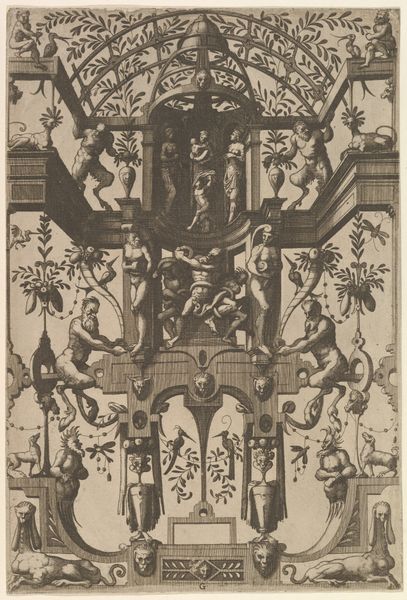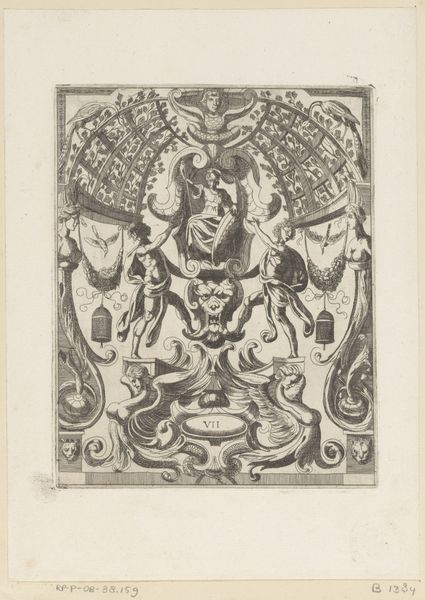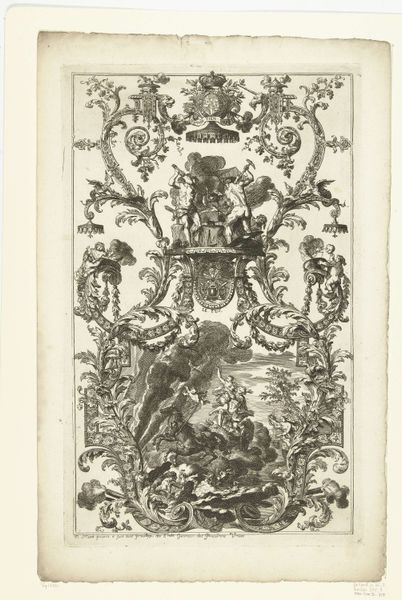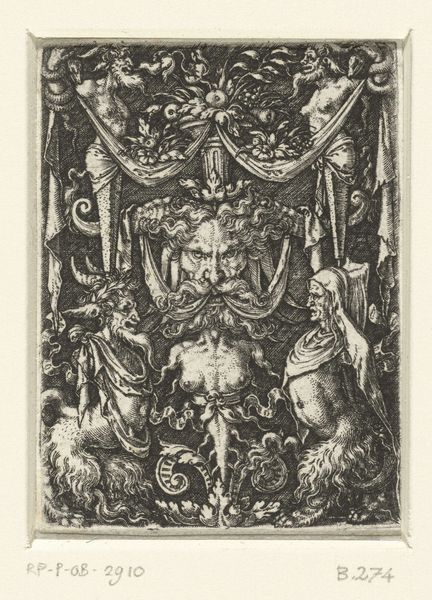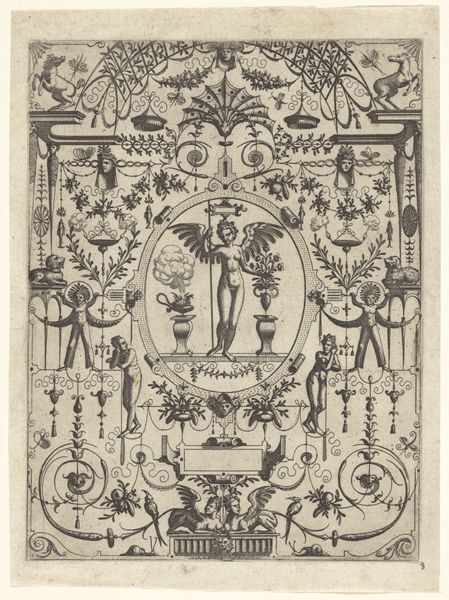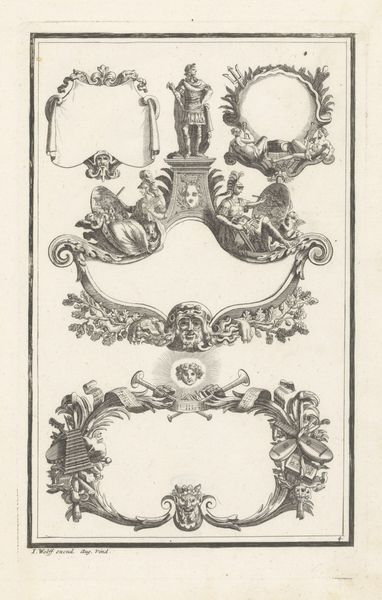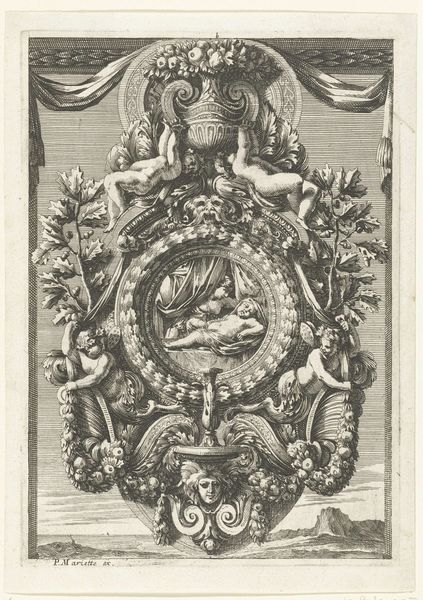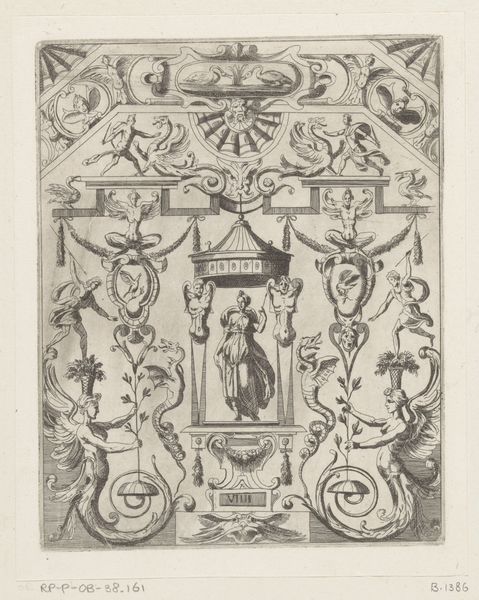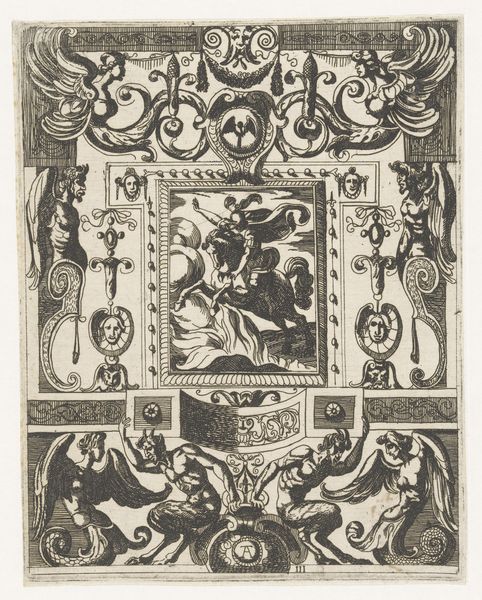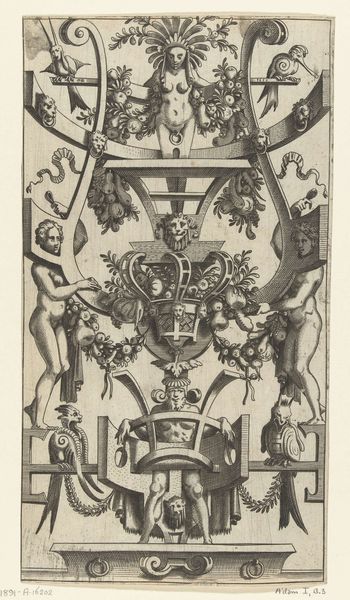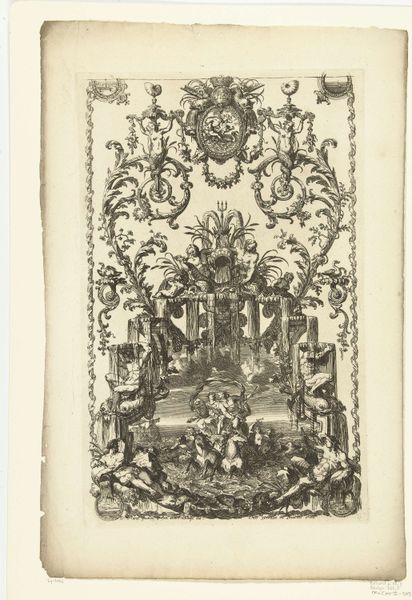
drawing, print, ink, engraving
#
drawing
#
pen drawing
# print
#
mannerism
#
figuration
#
ink line art
#
11_renaissance
#
ink
#
linocut print
#
history-painting
#
engraving
Dimensions: height 307 mm, width 207 mm
Copyright: Rijks Museum: Open Domain
Editor: This is "Kronos in een nis met een kind onder zijn arm," an engraving by Johannes or Lucas van Doetechum, from 1556. It's incredibly detailed, with lots of figures and ornamentation, but something about the composition feels unsettling, like a beautifully decorated cage. What do you see in this print? Curator: The complexity you note is certainly paramount. I'm struck by how the artists use line to create a visually dense and layered composition. The central niche, framing Kronos, acts as a focal point, yet it's almost overwhelmed by the surrounding ornamentation. The arrangement of figures, foliage, and architectural elements generates a fascinating tension between order and chaos. Notice how the pen work varies in thickness, modulating the tonal range despite the limited color palette. Editor: So you're saying the density is intentional? It feels almost claustrophobic. Curator: Precisely. The apparent disorder belies a rigorous structural organization. Semiotically, each element, be it a figure or a leaf, possesses its own sign value, yet it's the relationship between these signs that generates meaning. Editor: It's interesting how you focus on the form and structure. I hadn't really considered the underlying organization. Curator: By examining the intrinsic formal qualities – the interplay of line, space, and form – we gain insights into the work's complex semiotic architecture and its ability to communicate. Editor: I'll definitely be more aware of the interplay between density and organization in future prints. Thanks for pointing that out. Curator: An apt observation. Every element connects.
Comments
No comments
Be the first to comment and join the conversation on the ultimate creative platform.
